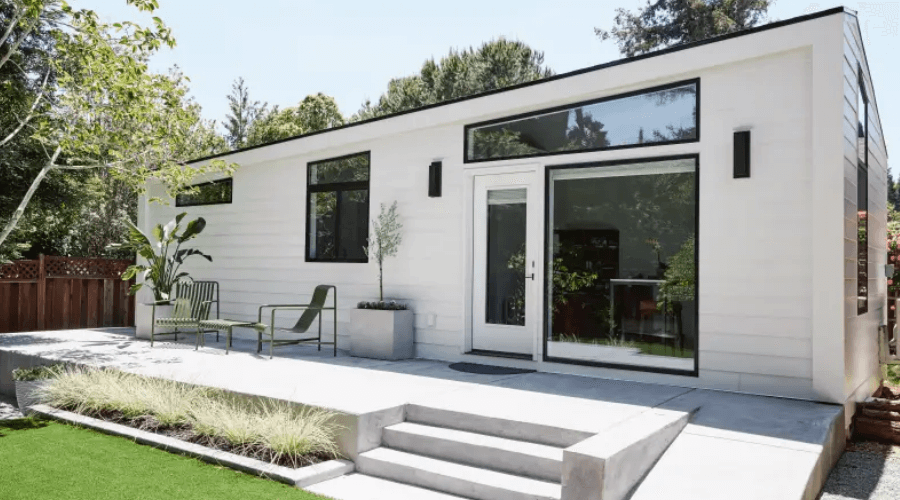In 2025, the rise of tiny homes has become more than just a minimalist trend — it’s a booming industry reshaping the housing market. Driven by affordability, environmental awareness, and the global shift toward sustainable living, the small house movement has evolved from a niche lifestyle choice into a profitable business model. Homebuilders, real estate investors, and eco-conscious consumers are recognizing that less space can mean more opportunity.
With housing prices skyrocketing and urban areas running out of space, tiny homes offer innovative, affordable, and sustainable solutions. From eco-friendly construction to remote work freedom, let’s explore why these compact dwellings are turning into a billion-dollar industry in 2025.
1. The Rising Popularity of the Small House Movement
The small house movement began as a grassroots push for simpler, more intentional living. Today, it’s a full-fledged economic trend. Many people are rethinking the traditional idea of “bigger is better” and opting for smaller, smarter, and more efficient spaces. This shift has been accelerated by remote work culture, climate concerns, and a collective desire for financial freedom.
According to Zillow, searches for tiny homes have increased by over 80% since 2022. Millennials and Gen Z buyers, in particular, are leading the charge, seeing tiny homes as both sustainable investments and paths to independence. They’re embracing designs that maximize space, minimize costs, and reduce environmental footprints.
Platforms like Airbnb are fueling this growth, with hosts using tiny homes as lucrative vacation rentals. These compact structures are easy to build, transport, and maintain — ideal for short-term rental markets. Even large developers are catching on, launching communities centered around sustainable living and minimalist design.
Pro Tip: For aspiring homeowners, check out financing options like LendingTree that now offer special loans for tiny homes.
2. Economic Benefits: Big Profits from Small Spaces
From an investment standpoint, tiny homes represent one of the fastest-growing sectors in real estate. Their affordability and versatility make them an appealing option for both builders and investors. With construction costs averaging between $40,000 and $100,000 — compared to the $400,000 median U.S. home price — they offer impressive returns on investment.
Investors are turning to tiny home communities as scalable business ventures. Companies like ESCAPE Homes and Tumbleweed Tiny House Company have seen record demand from individuals and developers seeking pre-fabricated or customizable small homes. These models are not only quick to assemble but can also be placed in various zones, from rural lots to eco-resorts.
Furthermore, the operational costs are minimal. With lower energy bills, property taxes, and maintenance fees, tiny homes make financial sense for both owners and renters. The result? A growing ecosystem of entrepreneurs flipping tiny houses, launching rental villages, and even creating off-grid luxury retreats.
To explore related opportunities in sustainable housing, see our internal post: Net-Zero Homes: The Future of Sustainable Living.
3. Sustainable Living at Its Core
At the heart of the small house movement lies the philosophy of sustainable living. With global climate issues and resource depletion becoming increasingly urgent, tiny homes are designed to reduce carbon footprints and promote eco-friendly practices.
These homes use fewer materials and are often built from recycled or renewable resources. Many feature solar panels, rainwater collection systems, and energy-efficient insulation, allowing homeowners to go off-grid entirely. Brands like Ecocapsule are taking sustainability a step further with futuristic designs powered entirely by renewable energy.
Compared to conventional housing, tiny homes require 85% less energy to heat and cool. This makes them an attractive choice for eco-conscious individuals and families who want to live greener without sacrificing comfort. The trend aligns with the broader push toward carbon neutrality in the housing industry, supported by organizations like U.S. Green Building Council.
Pro Tip: Combine tiny homes with sustainable landscaping techniques like xeriscaping and permaculture to create a complete eco-haven.
4. Technological Innovations Powering Tiny Homes
Technology is transforming how we design and live in tiny homes. Thanks to smart home innovations, automation, and advanced construction materials, these small spaces are more functional and livable than ever before.
For instance, smart devices from Google Nest and Amazon Alexa allow homeowners to control lighting, temperature, and security remotely. Compact appliances like all-in-one washer-dryers and foldable furniture maximize space without compromising convenience.
Moreover, the introduction of 3D printing technology in construction is revolutionizing the industry. Companies like ICON are now producing fully functional tiny homes in under 48 hours using sustainable concrete mixes. This not only reduces waste but also slashes labor costs.
To see how automation is shaping sustainable lifestyles, visit our internal guide on How to Create a Fully Automated Smart Garden.
5. The Rise of Tiny Home Communities
Beyond individual dwellings, tiny home communities are becoming a major urban and suburban development trend. These communities promote shared resources, affordability, and social sustainability — offering a balance between independence and community living.
Developers across the U.S., Australia, and Europe are building entire villages dedicated to the small house movement. Examples include Community First! Village in Texas and Tiny House Escapes in the UK. These neighborhoods feature shared gardens, renewable energy systems, and communal amenities.
Even local governments are embracing the idea. Some cities are offering incentives for tiny homes to address affordable housing shortages. This shift in policy indicates a long-term future for small-scale housing as part of sustainable urban development.
Pro Tip: If you’re interested in starting a tiny home community, research local zoning laws through resources like National Association of Home Builders before you build.
6. Tiny Homes as a Solution for Housing Crises
In many parts of the world, housing affordability has reached crisis levels. Tiny homes offer a practical solution, providing affordable, flexible, and scalable housing options for low- to middle-income populations.
Countries like Japan and New Zealand are leading examples, where space constraints have long necessitated creative housing solutions. In the U.S., nonprofit organizations such as Habitat for Humanity are exploring tiny home projects to support homeless and vulnerable populations.
Unlike traditional apartment complexes, tiny homes can be built quickly and affordably, often within weeks. Modular and mobile designs make relocation simple, allowing communities to expand or adapt as needed. This flexibility makes tiny homes a valuable tool for governments addressing urban density and housing inequality.
With global demand for housing continuing to rise, tiny homes are no longer a novelty — they’re a necessary innovation.
7. Challenges and Future Outlook
Despite their many advantages, the small house movement still faces obstacles. Zoning laws, financing limitations, and limited land availability can complicate construction and ownership. Many municipalities still classify tiny homes as “temporary structures,” restricting where they can be placed.
However, as public interest and policy evolve, these barriers are gradually breaking down. States like California, Oregon, and Colorado are updating legislation to allow more flexibility for tiny homes on private land or within established communities.
Looking ahead, experts predict the tiny homes market could reach a valuation of $8 billion by 2030. With sustainability, affordability, and flexibility at the forefront, it’s clear that the small house movement will continue to grow as one of the most transformative trends in housing and real estate.
Pro Tip: Stay updated on evolving housing policies through sites like HUD.gov for future investment opportunities.
Final Thoughts: Small Homes, Big Impact
The global shift toward minimalism, sustainability, and financial freedom has made tiny homes more than just a fad — they represent a redefinition of modern living. As climate concerns intensify and housing affordability remains a challenge, the small house movement provides a practical and profitable solution for both homeowners and investors.
From eco-conscious millennials to real estate developers, everyone is taking notice of how downsizing can lead to bigger opportunities. As 2025 continues, tiny homes stand at the intersection of innovation, sustainability, and entrepreneurship — proving that small spaces can indeed create big business.




